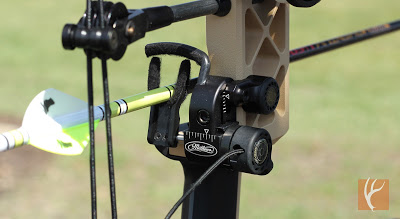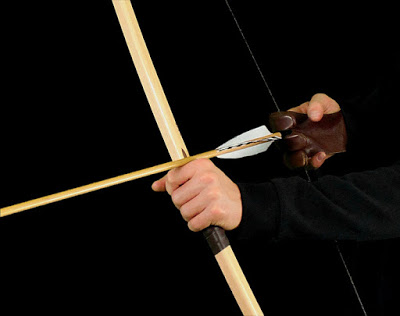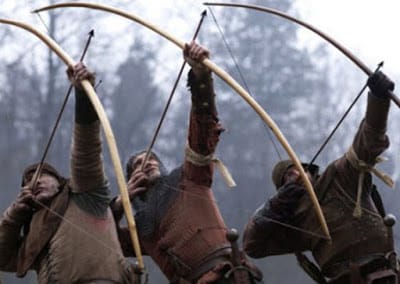any british longbowman will tell you that there is a major issue they must contend with each time they fire an arrow with their fancy, straight longbows: how do you get your arrow around the bow so that it flies straight?
if you can picture it, you hold up your bow and its string and point them directly at the target. then, you nock your arrow and it ends up sitting on the left side of the bow (assuming you’re right-handed, which i hain’t). so, now your bow is pointing at the target and your arrow is pointing somewhere off to the left — how do you expect to hit the target? that, then, is the archer’s paradox.
 |
| crossbow with flight groove |
if you were shooting a crossbow, this wouldn’t be an issue because it is designed with a flight groove in the centre of the bow frame, which channels the bolt and, thus, it doesn’t need to wrap around the bow and your bolt and bow are pointed at the target together.
 |
| compound bow cutaway and riser |
similarly, if you were shooting a compound bow, your arrow would be resting in a fancy riser inside a cutaway portion of the bow-frame, centring it on the X-axis. many compound bow shooters also have a drop-away rest which rises up as you draw the arrow back, lifting it so that it is centred on the Y-axis. thus, your arrow is pointed directly at your target, along with your bow.
but a simple longbow has no cutaway and has no channel to allow for centring on either the X- or Y-axes. so, how does a longbowman manage to hit a target in front of them and not way off to the left?
 |
| simple longbow |
the answer is all in the arrows themselves. crossbow bolts are very rigid and short and tend to maintain their shape and course throughout their flight. most compound bow arrows are quite rigid as well and do only some wiggling during their flight and that on the vertical axis, not the horizontal. longbow arrows, on the other hand, are comparatively very floppy and wiggly — this quality of an arrow is called its ‘spine’… the ‘stiffness’ of the arrow.
if you can picture taking a pool noodle by an end and wiggling it back and forth, you can see that it creates a sinus wave sort of pattern with two points along the way that don’t tend to move back and forth. this same thing happens with a wiggly longbow arrow once it is fired — the tension against the bow causes the arrow to bend and then snap back in the opposite direction, bending right around the bow! as it flies, it continues to wiggle back and forth, the arrow head itself snaking back and forth like, well, a snake… it’s something of a miracle that they ever hit their target at all.
a proper longbowman realizes that it is a matter of aiming those two points along the shaft that don’t wiggle back and forth that makes for a good shot. thus, they tend to pick arrows that have as similar a spine as possible to ensure that they will wiggle as similarly as possible.
so, how do you get your arrow around the bow so that it flies straight? you let it wiggle!!
so far on archer’s paradox
BONUS:








